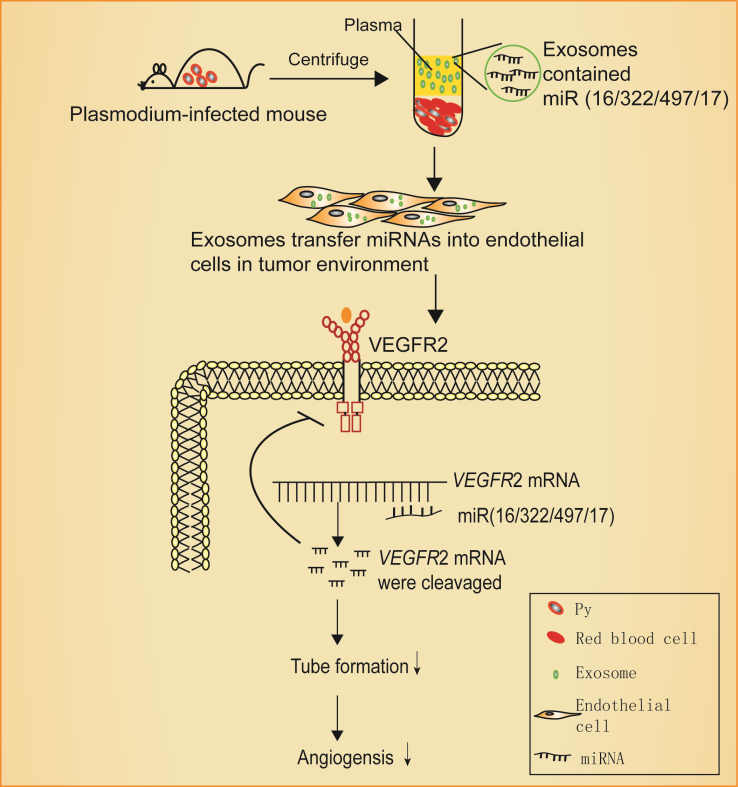Chinese Scientists Reveal A New Mechanism About Exosomes From Plasmodium-infected Hosts Inhibit Tumor Angiogenesis
A research group led by Prof. CHEN Xiaoping from the Guangzhou Institutes of Biomedicine and Health (GIBH) revealed a new mechanism about exosomes from Plasmodium-infected hosts inhibit tumor angiogenesis, which was newly published in international academic journal Oncogenesis online on June 26th.
Previously, Prof. Chen and his research group found that malaria infection provided anti-tumor effects by inducing both anti-angiogenic and potent anti-tumor immune responses in a murine Lewis lung cancer model. Exosomes, which are extracellular vesicles that function in intercellular communication, may play key roles in disseminating pathogenic host-derived molecules during infection. However, it is unknown whether the exosomes derived from Plasmodium-infected hosts inhibit tumor angiogenesis; therefore, researchers designed a murine Lewis lung cancer model study to address this question.
The first author Dr. YANG Yijun said that exosomes were isolated from the plasma of Plasmodium-infected mice. The researchers found that when co-cultured with endothelial cells, the exosomes markedly suppressed VEGFR2 expression and decreased endothelial cell migration. Intra-tumor injection of the exosomes significantly reduced Lewis lung cancer (LLC) growth in mice. Furthermore, researchers detected higher expression levels of the micro-RNA (miRNA) 16/322/497/17 in the exosomes derived from the plasma of Plasmodium-infected mice compared with those from control animals. They also observed that overexpression of the miRNA 16/322/497/17 in endothelial cells corresponded with decreased VEGFR2 expression and inhibition of angiogenesis in vitro, whereas inhibition of the miRNA 16/322/497/17 significantly alleviated these effects. These data provide a novel understanding of the interaction between Plasmodium infection and lung cancer.

Schematic of plasma exosomes from plasmodium-infected mice inhibition of angiogenesis through miR(16/322/497/17) to target VEGFR2.(Image by CHEN et al.)